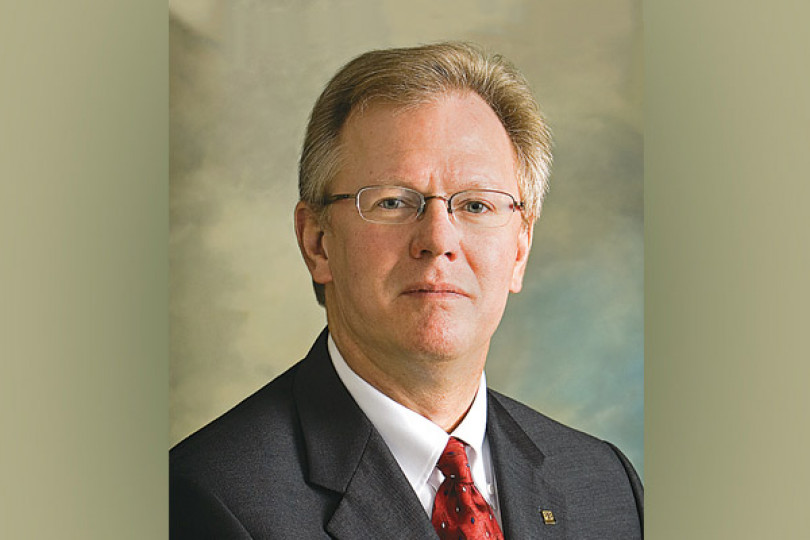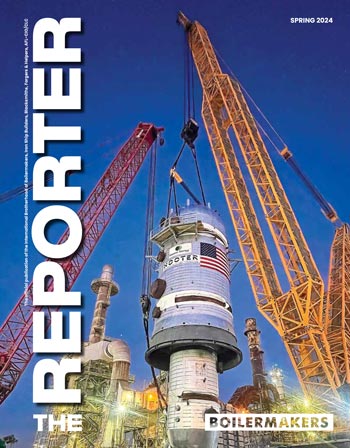The rehabilitation plan will not affect the benefits current retirees receive and will not impact the accrued benefits of active members at normal retirement age.
Trustee actions will help address fund imbalance
IN JANUARY, TRUSTEES of the Boilermaker-Blacksmith National Pension Trust took steps to address an emerging threat to the fund. Essentially, the problem is one of too little money going into the fund for the amount being paid out in benefits. If left uncorrected, this imbalance could, over time, trigger government intervention with potentially negative consequences for plan participants.
To address the imbalance, the trustees have elected — based on the expert advice of our actuaries — to take the proactive step of treating the fund as if it were in the “red zone” (although it has been certified in the “yellow zone” for 2017). Zone status is a way of measuring the funding percentage of a pension plan, with green being the best funded and yellow and red requiring corrective action. By treating the fund as if it were in the red zone, the trustees are allowed to make changes not available in the yellow zone. These changes are projected to move the fund back into the yellow zone in 2018 and on a “rehabilitation plan” to the green zone.
While the International Executive Council (IEC) has no legal authority over ANY trust fund, nor can the IEC legally influence trust fund trustees, the officers of our Brotherhood fully support the decision of the trustees. They’ve properly exercised their responsibility under the Employee Retirement Income Security Act (ERISA), the law that governs trust funds and trustees, and acted in the best interests of the plan participants and the plan itself.
The choices facing the trustees were extraordinarily tough and their decisions difficult. The rehabilitation plan they chose will not affect the benefits current retirees receive and will not impact the accrued benefits of active members at normal retirement age. Those benefits will remain exactly as they were prior to the rehabilitation plan.
What will change are “elective” provisions of the plan, such as early retirement and options for how pensions are paid out (with certain grandfathered exceptions).
These changes will positively impact the fund imbalance without the need to increase pension contributions or reduce the current benefit formula. The changes have no impact on our contractors.
It’s important for all participants to understand why these changes are necessary and how we can further strengthen the pension fund for current and future participants. I will address these topics below. On the pages following my column is a diagram of the pension trust and its relationships with professional advisory organizations along with a page addressing common questions.
So that participants are better informed about the pension changes, the National Funds Office is developing an informational video that will soon be available online at BNF-KC.com. The video will also be distributed to each lodge that represents plan participants. In addition, the Funds Office will mail documents describing the plan changes to every participant.
Why plan changes are necessary
THE HEALTH OF our national pension plan depends on contributions earned by our members (paid monthly by employers) and investment returns on plan assets. These two funding sources fluctuate due to economic, regulatory, demographic, political and other factors.
As our members know too well, the Great Recession of 2008 had a major impact on our plan (and many others across North America). So, too, have environmental regulations under the Obama Administration EPA. Those regulations, together with cheap, plentiful natural gas, have effectively halted the construction of new coal-fired power plants and contributed to the closure of hundreds of existing plants. The restrictions on new coal-fired plants and the shuttering of so many others have cost our members millions of man-hours.
In fact, Boilermaker man-hours have trended downward since 2009. At the end of 2016, one active Boilermaker was paying into the fund for every 2.4 retirees receiving benefits. Last year, the plan paid out $851 million while contributions totaled just $428 million. And return on investments has not made up the difference.
Contributing to the shortfall is the simple fact that people are living longer — and that means the fund is paying out benefits for more years, on average, than in previous times. While of course a longer life is a wonderful thing, increased years of payout do place additional strain on the fund.
But there is another major reason for the shortfall that is our own fault as a union. On too many projects, we are giving up Boilermaker work to other trades due to a lack of available Boilermaker craftsmen and women. Every time another trade performs our work, the pension contribution that would have gone into our fund instead goes into that of another union. Of course, we sometimes fill in gaps for other trades, but our Funds Office reports that we give up substantially more contributions than we take in.
We are not alone in the shortage of skilled craftsmen, especially welders. This is a problem across North America with other trades as well as the nonunion workforce. There simply are not enough skilled welders to take on the work.
A key challenge we face is the reluctance or opposition on the part of some construction lodges and individual members to take in additional members. This is a persistent problem that must be overcome if we are to secure market share and preserve our pension and other benefits. A larger, well-trained and top-performing Boilermaker workforce means greater opportunity to fully man construction and maintenance projects and win a greater share of available work. To get there, all of us must embrace change. We must welcome recruits into our locals and ensure they are trained to the highest performance levels. The best way to take on nonunion competition is to bring those workers into our union. That benefits them and us. As we grow our membership and our man-hours, we restore our pension plan.
To better address our challenges in manning projects fully with properly skilled Boilermakers, I have made two new appointments to International staff. Jeffrey Hughes, BM-ST for Local 26, is now Director – National Training Services and Assistant Director – Construction Sector Operations. Tim Simmons, BM-ST for Local 108, is our new Director – National Recruitment Services and Assistant Director – Construction Sector Operations. These two Directors will focus on growing our membership and ensuring our field construction members have the appropriate training to meet the needs of industry.
We must work together to safeguard our pension
BOILERMAKERS HAVE LONG enjoyed a robust and reliable pension plan that has set the standard in our industry. However, over the last decade, economic, regulatory and other forces have placed substantial pressures on our fund. Thanks to an exceptional board of trustees (appointed in equal numbers from our contractors and the union) we have responded appropriately to preserve our plan for current and future retirees.
These trustees carry a heavy legal burden to safeguard the plan, and they take this burden seriously. They monitor the fund’s health continually and, as an independent body, make all decisions on modifying the fund, relying on the advice of actuaries and investment managers.
Our National Funds Office likewise includes dedicated professionals who ensure that the trustees’ decisions are carried out accordingly.
We need a collective effort involving all our participating locals to restore our fund to full health. This means recruiting more construction members and fully manning every call-out for Boilermakers. It means our members taking advantage of every available man-hour and not forfeiting hours (and pension contributions) due to absenteeism or job-hopping. If we live the Boilermaker Code, forfeiting hours unnecessarily will become a thing of the past.
The Boilermaker-Blacksmith National Pension Trust is worth fighting for, as any member who has lived a dignified retirement life can attest. It will take every construction lodge and every construction member to ensure that pension contributions are sufficient to fully secure our pension (in combination with our investment returns).
With the prospect of greater economic activity, especially involving infrastructure development and a greater focus on fossil fuels, now is the time to expand our recruitment and training initiatives, to recover our market share and to secure our pension for decades to come.
Since its creation in 1960, the Boilermaker-Blacksmith National Pension Trust has never missed a payment to a retiree or beneficiary. Let’s work together to keep it that way by building our man-hours and growing our organization.








